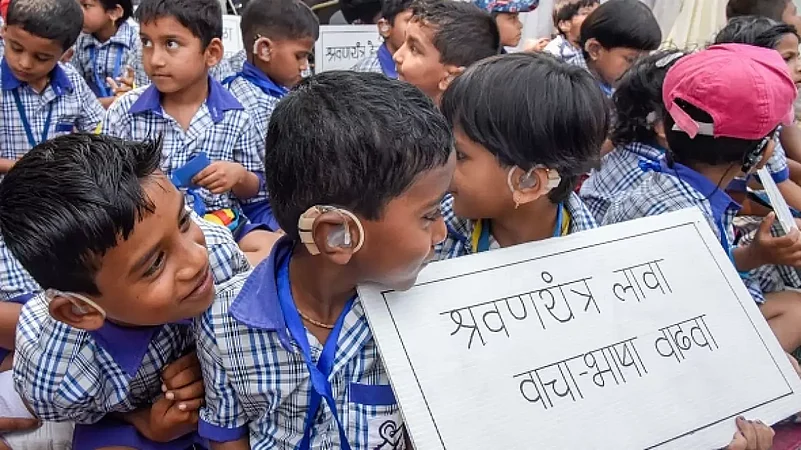Sasha stares with rapt attention at the teacher standing at the head of the class. Though the other children are whispering or looking around, Sasha’s gaze is fixated on the teacher. As a special child with hearing and speech impairment, she is assisted by a shadow teacher in school, who through sign language lends words to the lesson being taught. Sasha joined a regular school as part of the integration programme to make children with special needs join mainstream classes. After a while, Sasha turns to the shadow teacher and starts gesturing in sign language.
A Class IX student, Sasha is an intelligent child who is often frustrated by the fact that she is unable to converse with her friends without the help of the shadow teacher, her parents or her elder sibling. Born with the twin impairment, Sasha’s parents know that education in a mainstream school is extremely challenging for their child.
The dearth of schools that can impart quality education to children with special needs makes quality education in mainstream schools a much sought-after thing. The lesson being taught is the solar system. Sasha signals to her shadow teacher, who answers through sign language. Sasha is angry as she is unable to follow the lesson, says the shadow teacher.
“I teach her the entire lesson once we are back home. Same is the case with the other subjects,” says the teacher.
Sasha is taught the same syllabus as the entire class. Since she is unable to have a conversation with anyone else in the class, she is a lonely child. However, the class teacher makes it a point to ensure that she is not excluded from any activities.
“The lessons in Class IX are tough and voluminous. Sasha stands shoulder to shoulder with the others in class. Though we often try to do lessons in a shortcut manner for her, Sasha’s parents were clear about her inclusion, not exclusion. The shadow teacher is a great help. Without her, Sasha would have found the lessons a huge challenge,” says her teacher.
This is the third school that Sasha has been admitted to – the first two being schools for children with special needs. “Here, the teachers took lessons for the sake of taking it. Their teaching and outlook will be of no help to a disabled person. They feel that since our children will not do much in life, there is no need for any extra help,” says Sasha’s mother.
Since Sasha’s hearing impairment is severe, the hearing aid has not helped much. Next is the Mathematics class, a subject close to Sasha’s heart, says her mother.
She says, “She loves Maths since there is no talking involved. She needs to be taught multiple times, but once she is ready, sums are solved quickly.”
It is break time and Sasha’s shadow teacher signals to her to close her books and to open her tiffin box. One-half of the day has gone by. “I record all the lessons. It becomes easy for her parents or her sibling to take up Sasha’s lessons,” says the shadow teacher.


























